Growing your own fruits and veggies is incredibly rewarding. If you’re not a pro, don’t worry. You have to start somewhere. Whether you’re growing tomatoes in pots, in a raised bed, or in your garden, you need to know some basics. Learn how often you water tomato plants. Plus, learn a few critical care tips for a juicy harvest!
How Often Do You Water Tomato Plants?
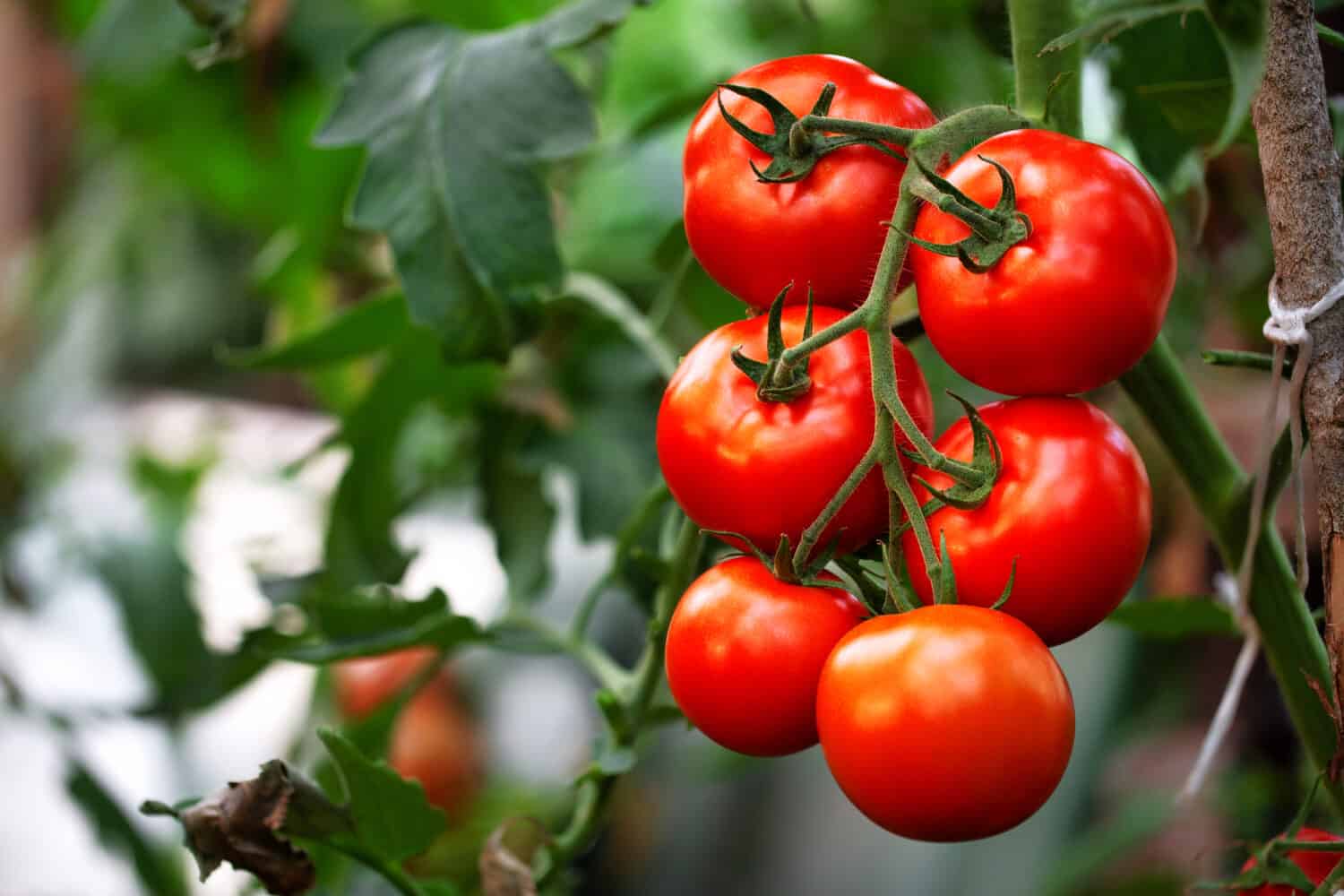
Too much water can damage ripe plants.
©eugenegurkov/Shutterstock.com
If you’re working with new tomato transplants, your focus should be on ensuring they grow strong roots. This requires daily watering. The watering should be deep, reaching at least eight inches into the soil. Then, once they’re growing, how much water you give them depends on where you’re growing them. They might be in the ground, in a pot, or in a raised bed. When you notice that they’ve started to ripen, you should continue watering as usual except reduce how much water you use. When your fruit is already ripening, too much water can damage your plants.
Potted Tomatoes
If you’re growing tomatoes in pots, you should water them frequently enough to ensure that the soil is always moist. Moist is different than soggy, however. Since your tomatoes are in a pot, they tend to dry out faster. Daily watering up to the soil level is a must. Wait until you see the water start to drip down through the drainage holes.

Tomato plants in pots require daily watering.
©AngieC333/Shutterstock.com
Tomatoes in Raised Beds
In a raised bed, you should have at least eight inches of soil depth. You can get away with watering your tomato plants only three or four times each week. However, your watering session should last at least 20 or 30 minutes. See how your plants react and switch it up to more frequent watering for shorter periods if needed. You may also want to invest in a soaker hose for this purpose. This way, you automate the process, and it frees you up.
Tomatoes in the Ground
Immediately after transplanting, you should water daily for up to 10 days. In the ground, you should be watering to soil level and if you’re not already working with a soaker hose, make sure that the hose you use is gentle. Once those roots are hooked into the soil, you can create a schedule for watering three or four times each week. Each time you water, it should be for a minimum of 30 minutes, but it could be for up to two hours depending on the current climate and the condition of your soil.
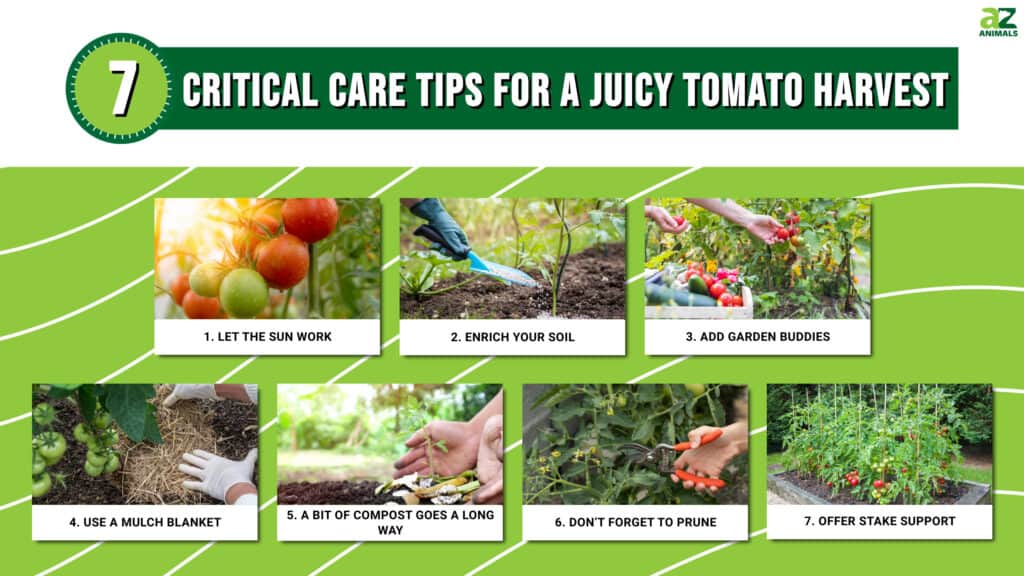
7 Critical Care Tips for a Juicy Harvest
1. Let the Sun Work
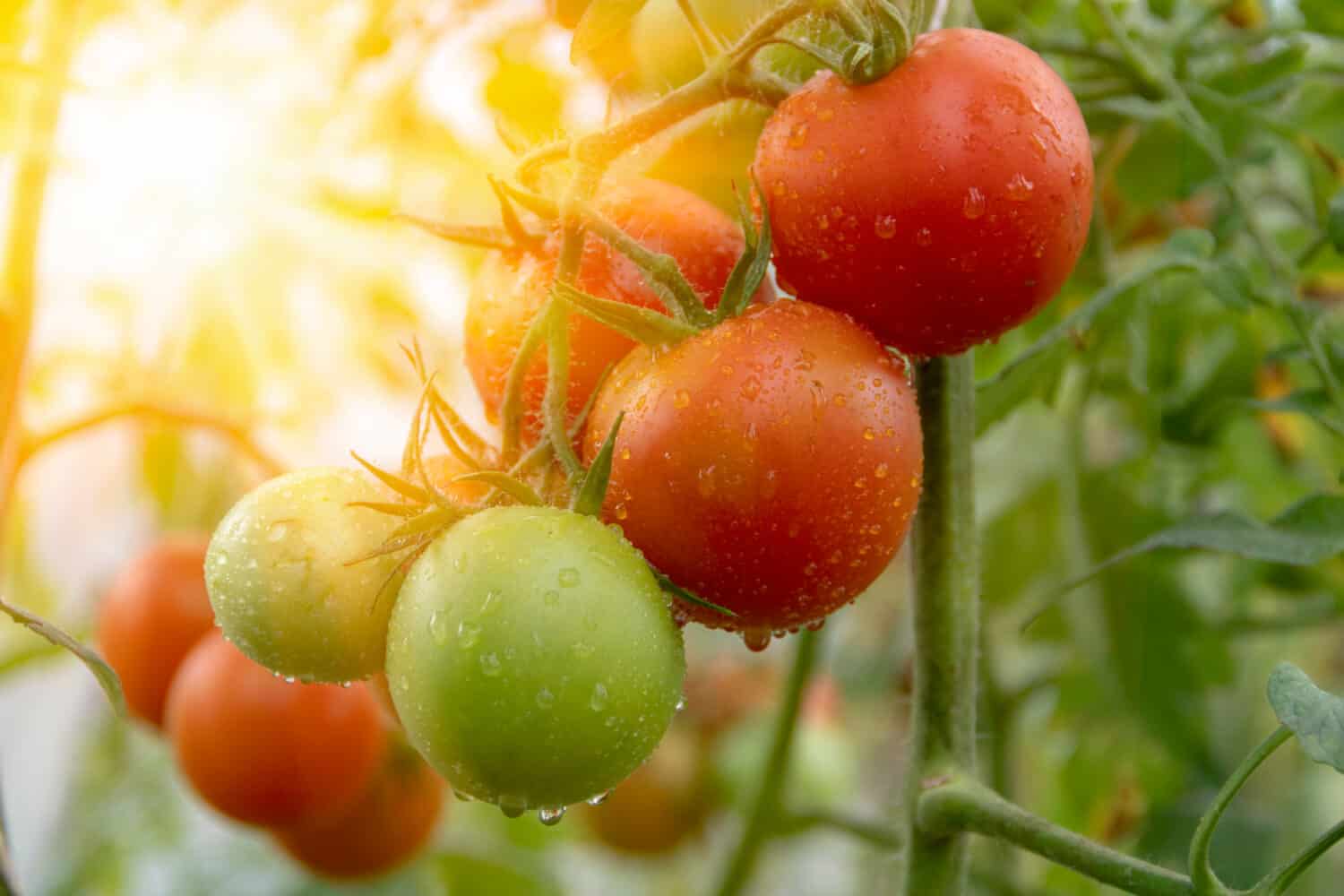
Tomatoes need at least seven hours of sun each day.
©Valery Rybakow/Shutterstock.com
Tomatoes love the sun so make sure that wherever you’ve planted your tomato plant, it gets plenty of sunshine each day (at least seven hours!). Potted plants should be placed near a window and in outside gardens, you should be selecting the sunniest spot.
2. Enrich Your Soil
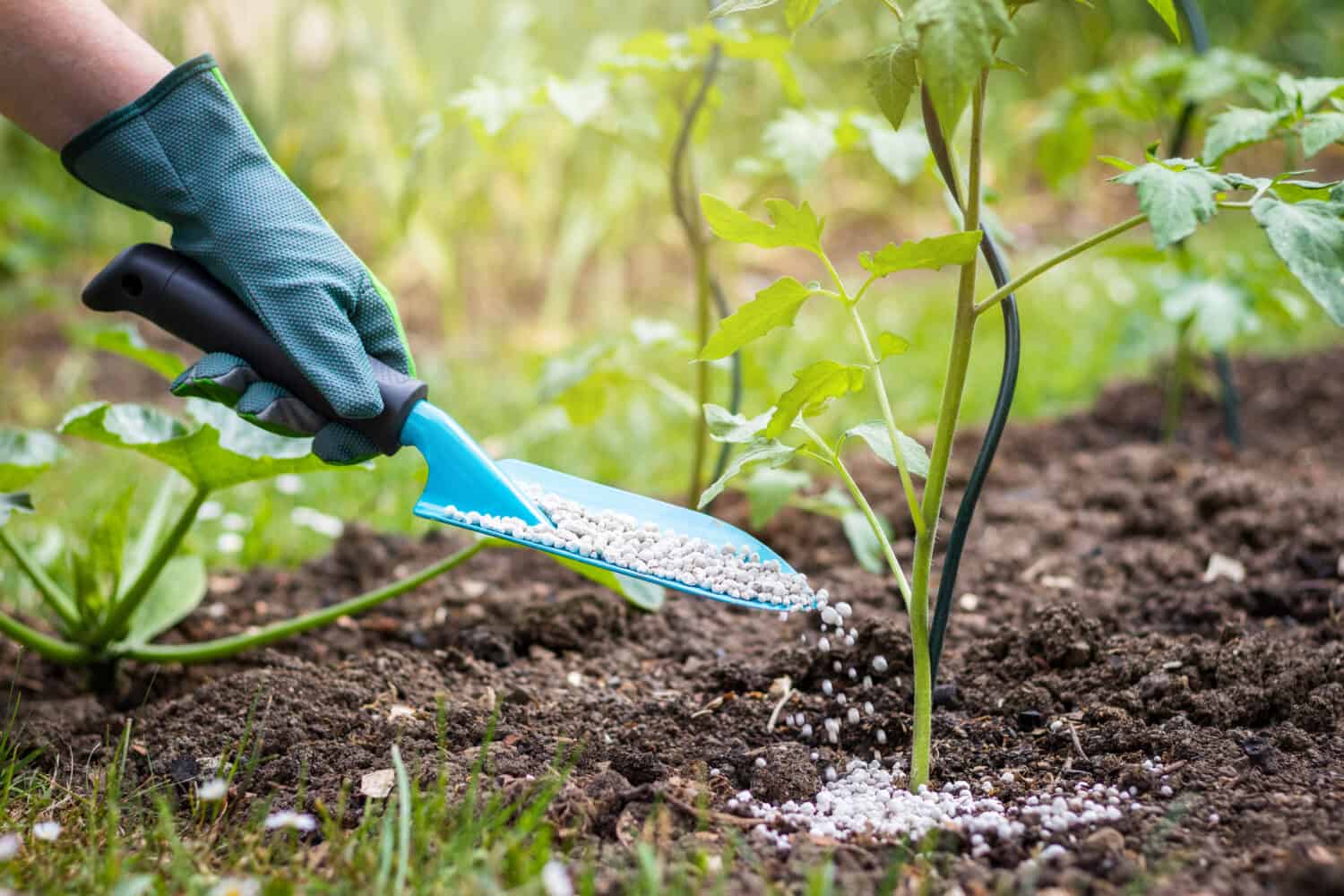
Add fertilizer and plant food to young tomato plants.
©encierro/Shutterstock.com
The soil your tomato plants are in should drain well and be slightly acidic. The ideal pH is between 6.5 and 6.8. Add a bit of fertilizer and plant food to make sure that you create the optimal environment for your plant to thrive.
3. Add Garden Buddies
Have you heard of companion planting? That’s when you incorporate additional plants that help your tomato plant flourish. For example, garlic and onions are fantastic buddies in the garden because they help repel pests. Basil and marigolds are two other plants you can incorporate to help your tomato plants as well.
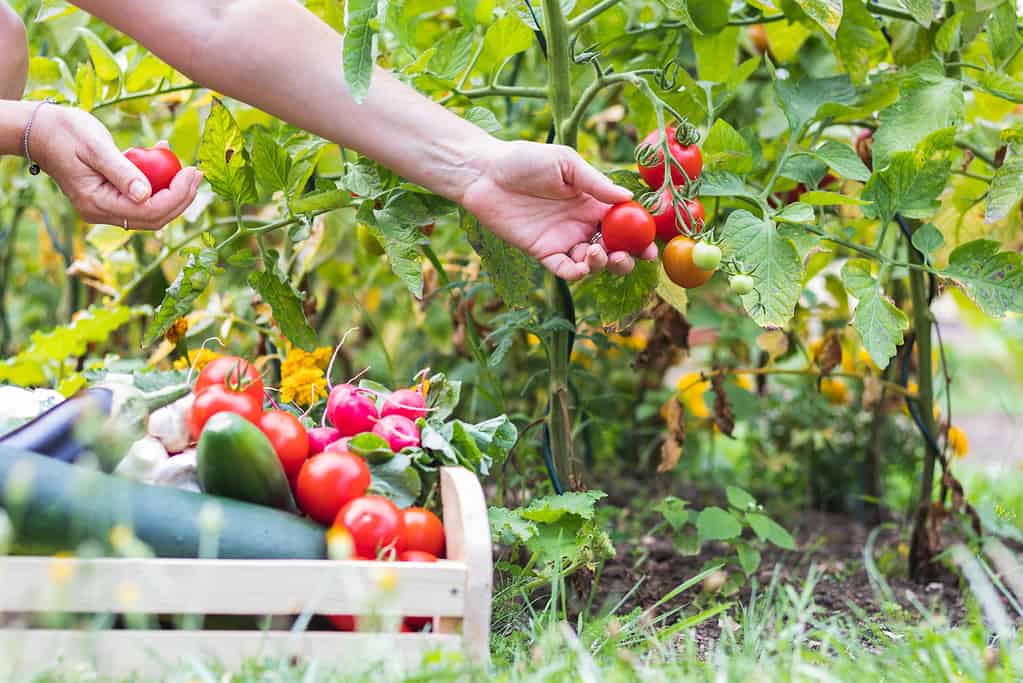
Companion planting can help your tomato plants thrive.
©iStock.com/Zbynek Pospisil
4. Use a Mulch Blanket
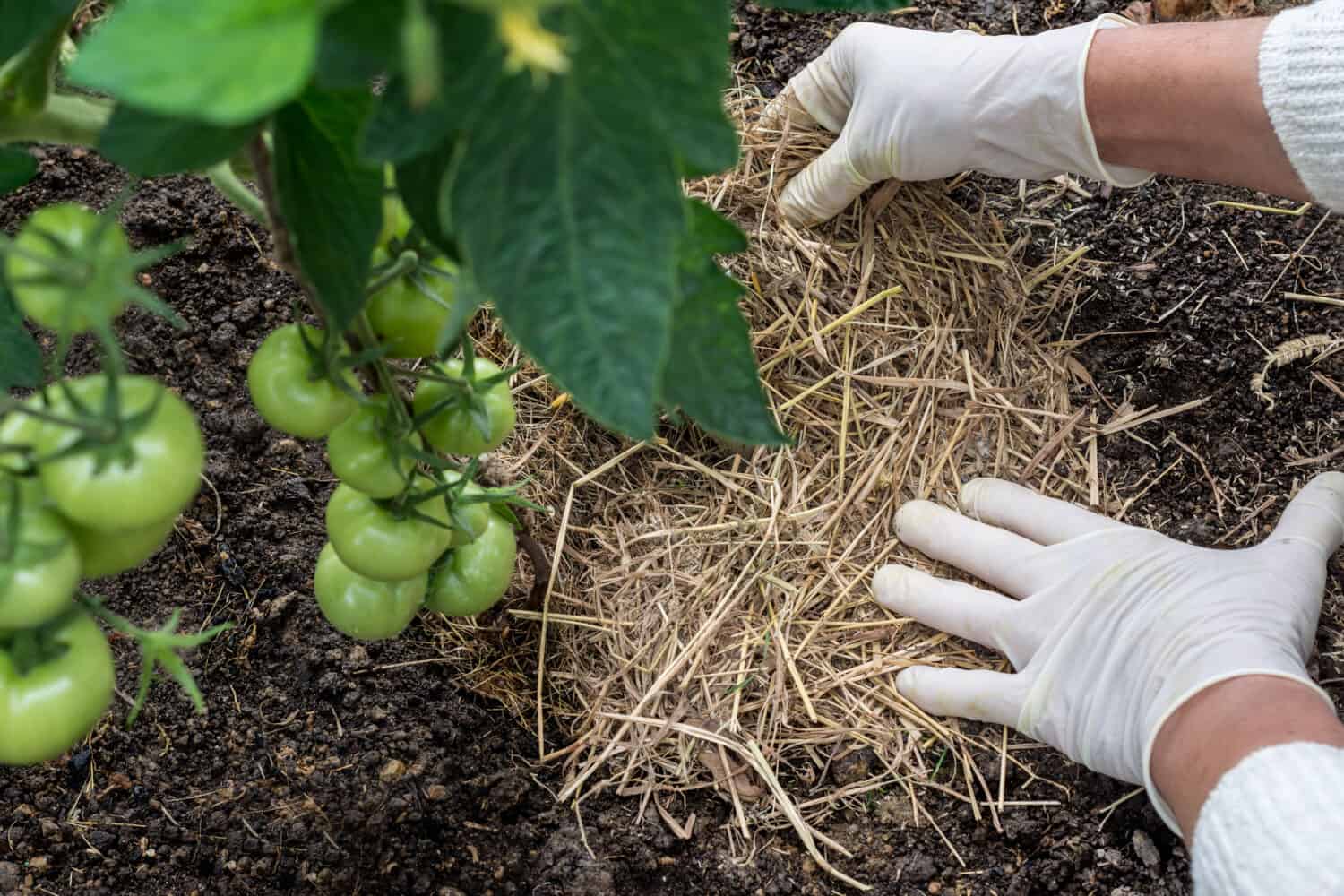
Your efforts will be rewarded if you provide your tomatoes with a blanket of mulch.
©Jurga Jot/Shutterstock.com
You’re watering deeply and keeping the soil moist but when the weather is extremely hot and dry, your efforts may be thwarted. A blanket of mulch can help protect your plants by keeping the soil cool and moist.
5. A Bit of Compost Goes a Long Way
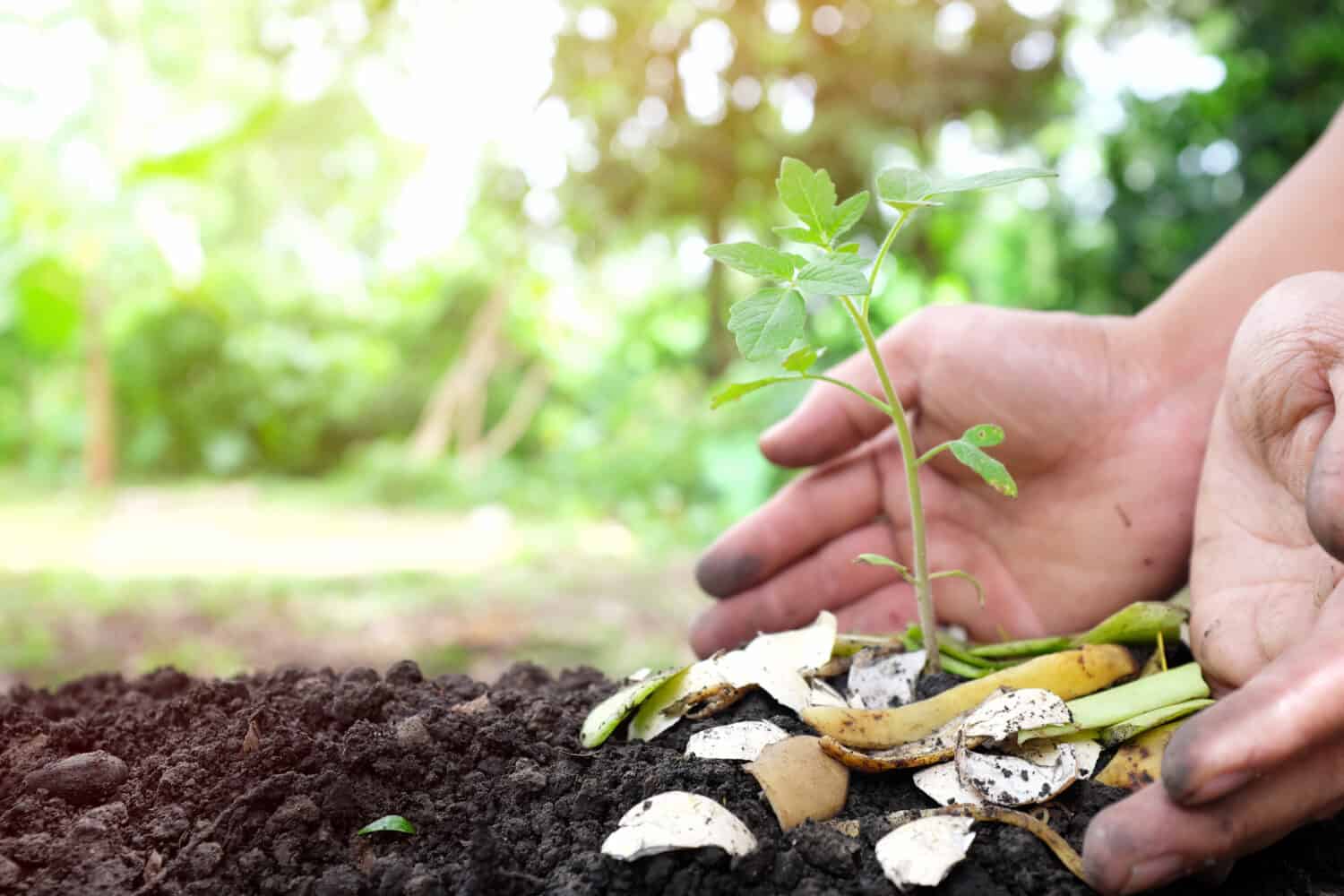
Young tomato plants benefit from compost.
©sulit.photos/Shutterstock.com
Nutrient-rich compost is a great addition to your tomato plants. Just mix it in with the soil to keep your hungry tomato plants thriving.
6. Don’t forget to Prune
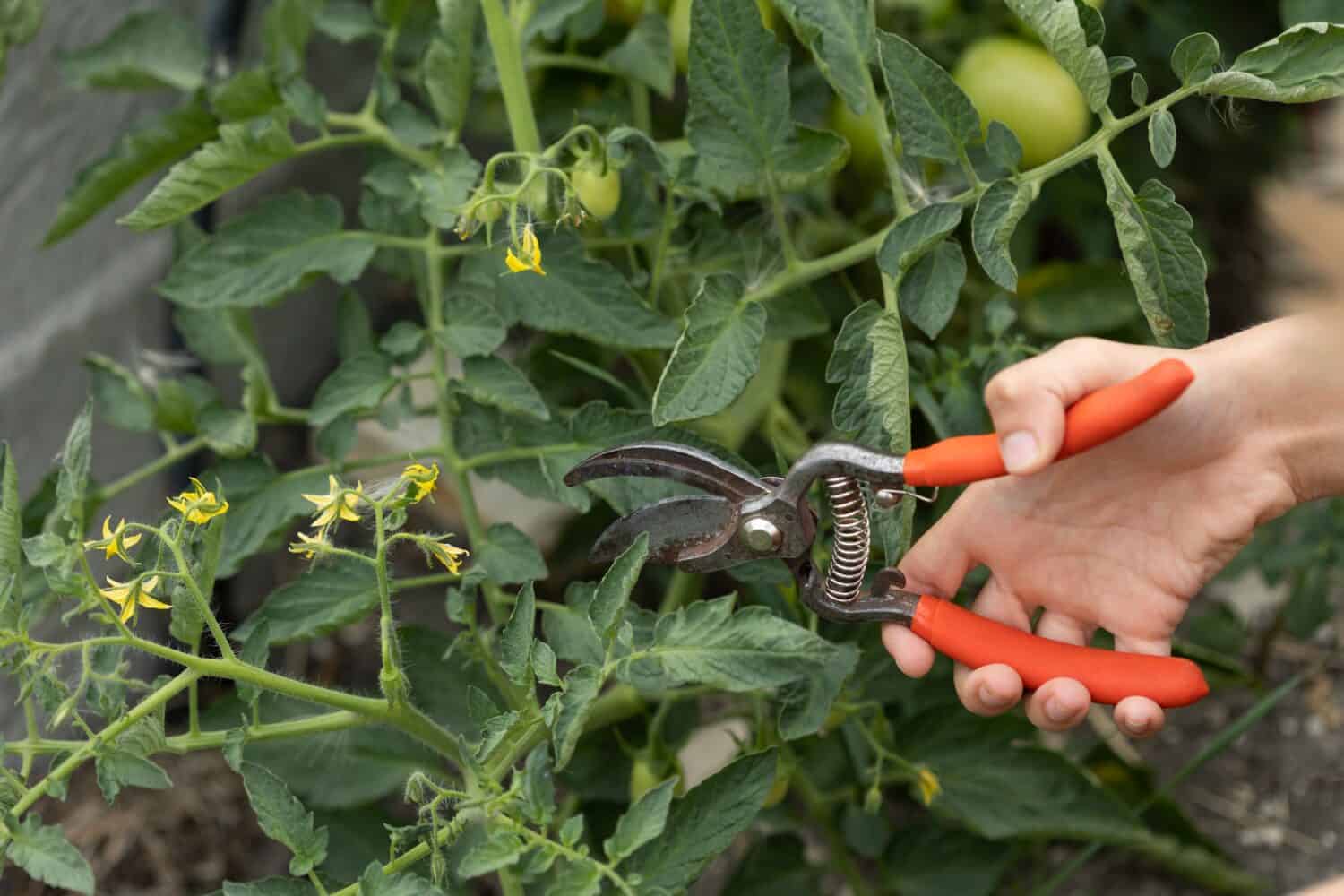
Removing suckers provides the plant with better air circulation.
©Tiplyashina Evgeniya/Shutterstock.com
As your tomato plant starts growing, it starts to shoot out leaves called suckers. By removing these, you help your tomato plant by ensuring better air circulation. You also aid it by allowing it to focus primarily on growing the fruit you are eagerly awaiting.
7. Offer Stake Support
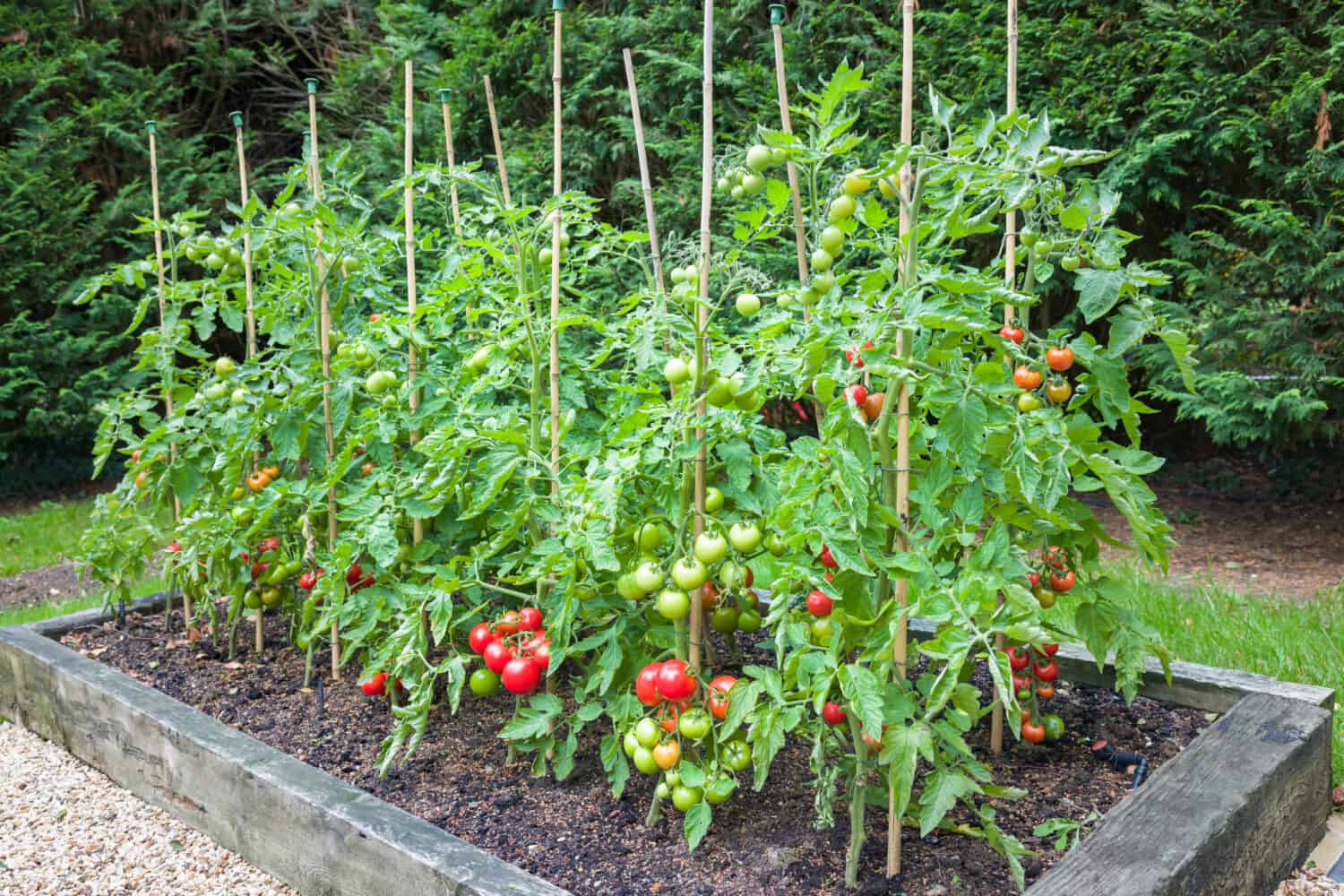
Set tomato plants up with a stake for support.
©Paul Maguire/Shutterstock.com
Growing tomato plants start to sag because of the weight of the fruit. Set them up with a stake or a nice cage so that as they rise, they have the support they need and they don’t stress out the lower parts of the plant.
Thank you for reading! Have some feedback for us? Contact the AZ Animals editorial team.








